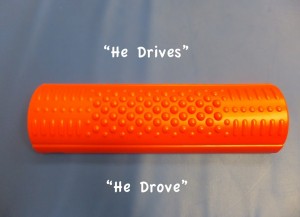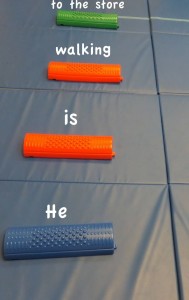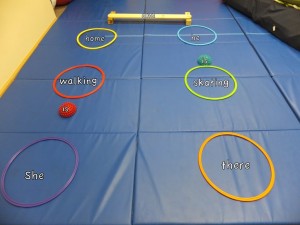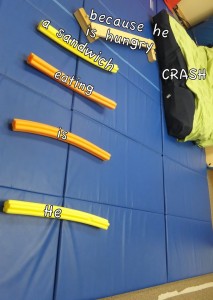Spotlight on Speech2U: Incorporating Movement Into Speech Therapy!
Today’s spotlight blog post comes from the fabulous Kelly over at Speech2u! She is writing about something very near and dear to my heart…Incorporating Movement into Speech Therapy! Kelly has some wonderful tips and ideas over at her blog. I encourage you to click the links at the bottom of this blog and check her out!
I’m excited for the opportunity to be a guest blogger for Communication Station while she is at home enjoying her precious time with her little one. I’m a strong believer in incorporating movement into my sessions. First of all, it’s fun and motivating for the children I work with. Second, I find that pairing movements with activities improves my client’s ability to learn and retain information-especially when doing more “drill types of activities.” I have a lot of clients who have difficulty producing age appropriate sentences. They may leave off smaller words (auxiliaries/copulas) Ex. Him walking home vs. He is walking home. OR they may have difficulty remembering to use the correct tense forms. For example, if they were talking about what they did last night, they might say, “I watch Power Rangers” leaving off the -ed ending which lets the listener know they are talking about something that has already happened. We could sit at the table and work on picture cards-but it so much more fun to get up and move. Which brings me to my favorite activity of the week: Sentence Obstacle Course. I borrowed some small hoops and some pieces from a balance beam from the Occupational therapy department. My first thought was to use directions (forward and back) to help teach the concept of future and past tense. So the students go through the obstacle course normally to say a sentence like “He is going home.” And they go backward through the course to say, “He was going home.” Here’s how we’ve addressed it in therapy: 1. Regular/Irregular Verb tenses. Set up one part of a balance beam, piece of tape or obstacle for the child to jump over. Have the child state the present tense form when jumping forward and the past tense when moving backwards.
2. Auxiliary +ing forms. Set up balance beams, pieces of tape or obstacles for the child to climb over. Depending on their level, I may start with an obstacle for each word. As they get better, I may decrease the number and lump into: Subject verb predicate. Here is how we had it set up last week:
I used three different colors with the is + walking the same color to teach that this goes with the verb. Other ideas for basic sentences:
- Coordinate with some of the great resources available on Teachers pay teachers or the free therapy blogs. Last week we used the Grammar Gumballs download Jenna Rayburn (Speechroom news) had on her TPT store. You can find that here: Grammar Sweets I had IS/ARE taped up in the front of the room and WAS/WERE taped up at the back of the room. They walked forward to put a gumball in the IS/ARE bucket and backward to put it in the WAS/WERE.
- Coordinate colors/colored tape with the colors used in the Rainbow Sentences App.
- To expand sentences, practice a base sentence for a few turns, then add another obstacle (Now we have to describe the boy…)
3. Compound Sentences: 2 sets of sentences with Balance beam in between. The child says the first sentence, walks across the balance beam and walks back saying the next sentence. If possible color coordinating the nouns/verbs.
4. Complex Sentences: 4 pieces (I used pool noodles I got at the Dollar store), balance beam, pillows to crash into. I do this in our OT gym. The students say their regular sentence, then the reason: as they are walking across the balance beam. As a fun reinforcer they can jump from the beam into the pillows for the last part.
I think that there are lots of ways to get this to work in therapy. Do you have other ways that you would address in therapy?
Kelly Hungaski MS/CCC-SLP has been practicing as an ASHA certified speech language pathologist for the last 17 years. She has worked in a variety of settings including: clinics, schools, tele practice and in adult day treatment programs. Kelly has special interests in Autism Spectrum disorders, motor speech disorders, play/activity based language instruction and social/pragmatic language skills. She blogs at Speech2u. You can see more of Kelly’s products at her TPT store or connect with her on Facebook.




No comments yet.